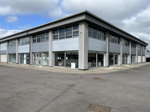Creating Lean Dealers, the product of 10 years’ research and practical experience with dealers across Europe, says most dealerships are unaware of the waste their business practices create –waste that takes cash straight off the bottom line.
In a typical dealership, for example, only two-thirds of aftersales jobs go right first time and are on time. The others result in costly wastes of fire-fighting, stress and customer dissatisfaction; costs that dealers just accept. They don’t realise they could eliminate them.
The lean dealer concept is not new. It is a topic that AM has visited on several occasion at its events and is common in other industries; but it is only now that sufficient evidence has been compiled that shows the real benefits for retailers.
While car manufacturing has been transformed by lean production over the last 20 years (it’s key to Toyota’s growth and profitability), dealerships have remained virtually untouched. Sectors as diverse as banking, healthcare and grocery retailing have proven that a step-change in performance occurs every time lean principles are applied.
#AM_ART_SPLIT# Step-by-step guide
Published by the Lean Enterprise Academy in co-operation with the International Car Distribution Programme (ICDP), Creating Lean Dealers is a DIY guide to enable dealers to achieve such a step-change for themselves in all areas of the business.
The journey to becoming a lean dealer begins by understanding two things: the ability of the processes in the dealership to deliver right first time, on time, at every step, and the actual demand of those processes and separating it into different types.
The next step is to use these measures, together with a map of the “current state” of the process, to define, prioritise and address the problems, with the teams who do the work, in a structured way using the Plan-Do-Check-Act method of improvement.
The concept is similar to the Toyota Retail System (see AM November 2).
A series of questions help dealers to develop a “future state” map of the process – a picture of what the process will look like when the problems have been addressed and some of the wastes eliminated.
An accompanying action plan lists the “bite-sized steps” needed to achieve the transformation.
But like every transformational change, management plays a critical role. Without a fully committed CEO leading from the top, improvements are almost certainly doomed. Management has to question and sometimes ‘unlearn’ many of its traditional methods.
Core to this is shifting the mind-set from managing results to managing processes using visual progress boards (rather than computers) on a daily or even an hourly basis. Good results are a direct product of good processes.
#AM_ART_SPLIT# Successful pioneeers
Grupo Fernando Simao/Autopartner in Oporto, Portugal, began its lean journey in 2000.
Its first project was a lean used-car preparation centre where it can prepare up to two-year-old ex-rental cars to order in two days. The company now has a centralised parts warehouse which can deliver parts from any one of its 14 brands just-in-time to the group’s outlets. Its “heavy damage” bodyshop has a throughput time of two to three days for any type of repair.
Lean service workshops have given space to put in new sales and aftersales franchises.
All this has made Simao/Autopartner the most profitable dealer group in Portugal but the icing on the cake is the latest lean project: a 30- minute while-you-wait appointment-slot service and repair offer for cars under four years old/40,000 miles.
Chief executive Pedro Simao said: “Lean is now core to my business strategy. It has given me happier customers, more space to expand and more profit, even in a shrinking market.”
Meanwhile, Cormac O’Leary, a VW dealer in Ireland, says of the concept: “I was sceptical at first, but lean really works and it has transformed our business.
“We’ve had independent verification that we’re now achieving efficiencies of 180% on service and repair work while at the same time our customer satisfaction has improved.”
#AM_ART_SPLIT# Key questions to become lean
What are the main processes in your organisation? How well does each process perform in delivering value for your customers and profit-ability for your organisation?
What is the actual demand for each process?
What are the ‘vital few’ types of work that account for most of your throughput?
How can you create stability by turning unpredictable into predictable work?
How can you flow this predictable work through your organisation, without delays, errors, rework and firefighting?
What does management have to do to create this flow and sustain it?













Login to comment
Comments
No comments have been made yet.